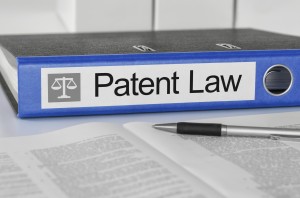 Back in May, I wrote about the Supreme Court’s TC Heartland decision on patent venue, where the permissive, long-standing Federal Circuit approach to the issue was rejected in favor of a much more restrictive approach. In that column, I made the point that the decision could mean “we are also likely to see an uptick in patent cases filed where the defendant is incorporated” as patent owners sought to avoid venue-based disruptions to their cases in light of TC Heartland making patent venue more restrictive. Now that a few months have passed since that decision, how has my prediction held up? Thanks to information provided by the legal analytics firm Lex Machina, it is clear that my prediction was a correct one. More importantly, the data since TC Heartland makes plain that the decision has had an outsized influence on patent practice, with a measurable shift in where cases are being brought.
Back in May, I wrote about the Supreme Court’s TC Heartland decision on patent venue, where the permissive, long-standing Federal Circuit approach to the issue was rejected in favor of a much more restrictive approach. In that column, I made the point that the decision could mean “we are also likely to see an uptick in patent cases filed where the defendant is incorporated” as patent owners sought to avoid venue-based disruptions to their cases in light of TC Heartland making patent venue more restrictive. Now that a few months have passed since that decision, how has my prediction held up? Thanks to information provided by the legal analytics firm Lex Machina, it is clear that my prediction was a correct one. More importantly, the data since TC Heartland makes plain that the decision has had an outsized influence on patent practice, with a measurable shift in where cases are being brought.
As Lex Machina’s blog post puts it — “the change is stark”. Prior to TC Heartland, “twice as many cases were filed in E.D. Tex. as D. Del.; but afterwards, it’s less than half.” Put another way, even though the number of patent cases filed in other districts remained steady, there was a dramatic drop in cases filed in East Texas. More filings in Delaware — where many patent defendants are incorporated, and thus subject to venue even under TC Heartland — made up some, but not all of, the slack.
It is not surprising that post-TC Heartland, Delaware is the new preferred venue for patent cases, at the expense of East Texas. For years, East Texas had been the place where patent owners, especially non-practicing entities, preferred to file their cases — for a variety of reasons. Once personal jurisdiction over the defendant was no longer enough for venue purposes, however, it was clear to most that the East Texas patent juggernaut was doomed. Whether or not the Supreme Court intended for that result when it issued its decision in TC Heartland is immaterial. The data shows that while East Texas remains a popular venue for patent cases, it is no longer holds the number one ranking. Unless there is a rush of companies opening physical locations in East Texas — which would offer another pathway for plaintiffs to argue proper venue post-TC Heartland — the new status quo is unlikely to change.

How 8am LawPay Takes The Sting Out Of Legal Billing
Getting paid can be an arduous task. You should make it as easy on yourself and your clients as possible.
As for Delaware, it remains unclear whether the influx of new patent filings in that district is a welcome one. Having litigated patent cases in Delaware for my entire career, I know firsthand how congested the docket can become, with concomitant effects on case management and expense. Lex Machina’s data illustrates how much Delaware’s burden has increased post-TC Heartland — with a rise of over 100 new patent cases filed in the 90 days following the decision. Adding these new filings to an already-crowded docket compels a response. Especially when Delaware’s resources were already stretched due to one judge retiring and another taking senior status. In response to those developments, the District Court reached out to its sister court in the Eastern District of Pennsylvania for help. Perhaps even more help will be needed in light of TC Heartland’s impact.
While the long-term impact of changing venue in patent cases is uncertain for both East Texas and Delaware, there is an interesting additional development worthy of comment. Lex Machina’s data shows, as discussed above, that a certain number of cases that previously went to East Texas are apparently not even being filed post-TC Heartland. This drop-off suggests that there were a certain number of patent cases that only made sense if they could be brought in East Texas. Whether that is because plaintiffs felt that East Texas filings would make it more likely for their case to settle favorably, or because it was considered easier to sue multiple infringers in East Texas is unclear. The reasons for a particular plaintiff to forego filing a case at all, rather than file that action in Delaware or any other non-East Texas district is surely fact-specific, and difficult to ascertain based on public information. But just seeing that this phenomenon exists speaks volumes about how powerful East Texas’s hold on plaintiff behavior is and was.
Ultimately, we are in the early stages of analyzing the impact of the “new” patent venue rules. The early returns confirm that a dramatic shift in filing behavior has already taken place, and that the universe of defendants who need to fear being haled into East Texas has likely shrunk. At the same time, the barrage of filings in Delaware could present challenges to both plaintiffs and defendants hoping for quick adjudication of their claims. Back in May, I suggested that we may see renewed calls for specialized patent courts if one district became overwhelmed post-TC Heartland. I see no reason to revise that prediction, especially if the Supreme Court continues to foster upheaval in patent practice by eliminating IPRs in the pending Oil States case. For patent lawyers, it seems like everything is always a-changin’ — especially when the Supreme Court sings about patent litigation.
Please feel free to send comments or questions to me at [email protected] or via Twitter: @gkroub. Any topic suggestions or thoughts are most welcome.

Meet Your New Team: Intuit QuickBooks Unveils The Power Of AI Agents For Business Growth
The future of business is here, and it's powered by QuickBooks.
Gaston Kroub lives in Brooklyn and is a founding partner of Kroub, Silbersher & Kolmykov PLLC, an intellectual property litigation boutique, and Markman Advisors LLC, a leading consultancy on patent issues for the investment community. Gaston’s practice focuses on intellectual property litigation and related counseling, with a strong focus on patent matters. You can reach him at [email protected] or follow him on Twitter: @gkroub.